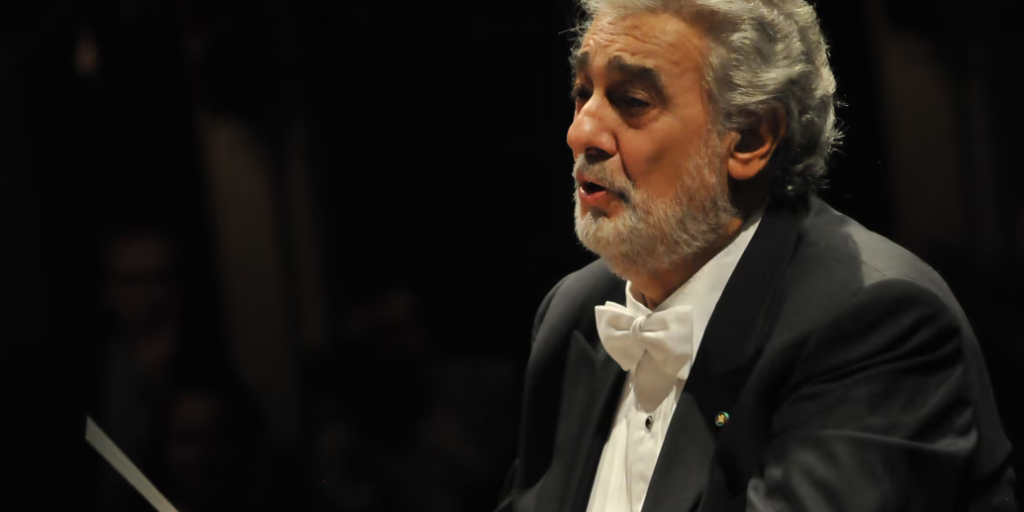
Plácido Domingo is one of the most renowned names in classical music and opera, often placed among the greatest voices of the 20th and 21st centuries. Known as a versatile tenor and later a distinguished baritone, he has performed in more than 150 roles across the world, an achievement virtually unmatched in operatic history.
Often described as one of “The Three Tenors” alongside Luciano Pavarotti and José Carreras, Domingo’s voice has mesmerized millions, while his international reputation transformed him into a household name. His career spans opera stages, symphony halls, music festivals, and leadership roles as a conductor and artistic director.
Also read: Ikiru Ending Explained: Finding Meaning in Life’s Final Days
But beyond his artistry, Domingo has also accumulated significant financial wealth. Through decades of performances, global tours, recordings, and musical leadership, he has built a net worth that reflects both his artistry and his ability to maintain cultural relevance across decades.
From Madrid Roots to Operatic Greatness
Plácido Domingo was born on January 21, 1941, in Madrid, Spain. His family later relocated to Mexico, where his parents were involved in zarzuela, a traditional form of Spanish musical theater.
Growing up in this rich artistic environment, Domingo discovered his passion for performance early in life. Trained initially as a baritone, he transitioned into a tenor, where he found his most iconic roles.
By the late 1950s, he debuted in La Traviata in Monterrey, Mexico, marking the beginning of his operatic journey. In the 1960s and 1970s, Domingo began performing internationally, drawing recognition for his soaring voice and emotional depth.
He quickly rose to prominence, singing at world-renowned opera houses, including the Metropolitan Opera in New York, La Scala in Milan, Covent Garden in London, and Vienna State Opera.
Domingo’s ability to embody both lyrical and dramatic roles made him unique. He performed in Otello, Tosca, Carmen, and beyond, proving his versatility as a performer. He eventually took on more than 150 opera roles, far exceeding the number typically tackled by most opera singers who specialize in fewer parts.
Global Fame with The Three Tenors
In the 1990s, Plácido Domingo became a global household name thanks to The Three Tenors concerts with Luciano Pavarotti and José Carreras. Their televised concert at the 1990 World Cup in Rome reached worldwide audiences and sold millions of records, bringing classical music into mainstream culture.
The Three Tenors’ concerts became some of the most successful classical crossover events in history. Their recordings topped charts across Europe, the United States, and Asia, while their live performances filled stadiums that usually hosted sporting events.
This leap from high culture into popular entertainment proved to be a significant financial and cultural success story, elevating Domingo’s public image and wealth.
Contribution Beyond Singing
In addition to his singing, Domingo has excelled as a conductor and arts administrator. He has conducted opera performances and symphonic works for major orchestras worldwide.
His deep involvement with the arts extended into leadership roles, serving as artistic and general director for institutions such as the Los Angeles Opera and the Washington National Opera.
These positions brought both prestige and financial rewards while demonstrating his commitment to nurturing the next generation of operatic talent. His influence as a cultural leader goes far beyond his voice, shaping the global stage for classical music.
Net Worth
Plácido Domingo’s net worth is estimated at $300 million, making him one of the wealthiest figures in classical music history. His fortune reflects multiple revenue streams accumulated across a career spanning more than sixty years.
Opera Performances and Concerts
Domingo’s live performances across major opera houses have been the foundation of his wealth. For decades, he earned top-tier fees for singing lead roles in operas produced by institutions like the Metropolitan Opera in New York, La Scala in Italy, and Vienna State Opera.
His reputation as a versatile tenor and conductor made him one of the highest-paid classical performers in the world.
The Three Tenors Phenomenon
A significant boost to his wealth came from The Three Tenors concerts and recordings. The 1990 concert at Caracalla Baths in Rome alone sold millions of albums and became the best-selling classical recording of all time. Worldwide tours followed, filling stadiums and generating enormous revenue.
These crossover successes introduced classical music to broader audiences while providing Domingo with royalties and profits that far exceeded what most classical musicians could expect.
Recordings and Royalties
Domingo has recorded hundreds of albums in multiple languages, covering opera arias, classical repertoires, Spanish songs, and crossover projects. His recorded output sold millions worldwide, securing royalty streams that continue to contribute to his net worth.
His discography includes both solo projects and collaborations, ensuring a steady income from physical sales, digital downloads, and streaming royalties.
Conducting and Artistic Leadership
Another pillar of Domingo’s financial empire came from his dual role as conductor and administrator. While many opera singers retire in later years, Domingo strengthened his financial profile by taking high-paying leadership roles.
Positions at the Los Angeles Opera and Washington National Opera, combined with concerts he conducted worldwide, provided consistent income well past his vocal peak.
Real Estate and Investments
Like many wealthy entertainers, Domingo invested in real estate. He owns or has owned luxury residences in Spain, the United States, and other countries.

These holdings reflect both wealth accumulation and the lifestyle of a global artist. The appreciation of these properties over the decades contributed further to his overall net worth.
Endorsements and Public Appearances
While classical performers rarely rely on endorsements to the level of pop stars, Domingo secured additional income through appearances, commercial collaborations tied to The Three Tenors, and honorariums for speaking or performing at cultural events.
Cultural Impact and Global Influence
Plácido Domingo’s wealth cannot be separated from his influence. As an artist, he broke barriers by combining operatic tradition with a broader appeal. He showed that opera singers could achieve superstar status globally, much like pop icons.
His leadership roles in opera institutions not only increased his wealth but also left a legacy of supporting young singers.
Through competitions such as Operalia, an international opera competition he founded, Domingo fostered opportunities for rising talent. This cultural contribution enhances his reputation far beyond financial success.
Longevity and Continued Presence
Even into his 70s and 80s, Domingo has continued performing, astonishing audiences with his stamina and artistry. He successfully transitioned from tenor to baritone roles, extending his singing career and financial opportunities.
His ability to remain active in the concert circuit into later life is a major reason his net worth ranks so high compared to many peers.
Plácido Domingo’s estimated net worth of $300 million speaks to both his legendary artistry and his business acumen in sustaining a career across multiple decades.
From his beginnings in Mexico to global launches with The Three Tenors and leadership roles at opera institutions, he represents a unique figure who combined talent with global impact.
His fortune is built not only on performance fees and royalties but also on conducting, management roles, real estate, and recordings that continue to resonate worldwide. At the intersection of music and wealth, Domingo remains one of the most influential and financially successful classical performers in history.
Also read: The Fountain Ending Explained: Acceptance Through Life and Death’s Cycle








